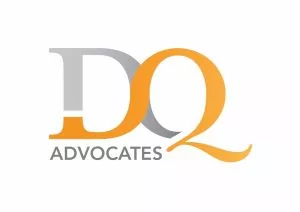Creating a trust involves more than simply drafting a trust document and arranging for it to be signed. A trust is a gift of, for example, money or other assets by the 'Settlor' to a Trustee or Trustees which binds those Trustees to deal with such money or assets for the benefit of Beneficiaries. It is enforceable by the Beneficiaries and not the Settlor. The terms of the trust are usually set out in a Trust Deed.
A trust relationship distinguishes between the legal ownership of, and equitable interest in, trust property.
By making the gift to the Trustees, the Settlor has divested himself of ownership of those assets.
The Trustees become the new legal owners of the assets on behalf of the Beneficiaries.
The three certainties
There are "three certainties" which must be fulfilled for a trust to be created, or the trust will fail:
1. Intention;
2. Subject matter; and
3. Objects.
1. Certainty of Intention
Certainty of intention is a vital element of the creation of a trust. It must be clear that the Settlor intended to create a trust and not, for example, an outright gift to the Trustees for their own benefit. On creation of a trust, it is possible to reserve powers to either the Settlor, Protector, or other third party; however case law has indicated that the reservation of too much power can be taken as evidence that there was no intention to create a trust. If a trust is challenged in court, this can result in the trust property being deemed to have been the property of the Settlor at all times which may have adverse tax consequences for the Settlor or his estate. Please note, the Isle of Man does not yet have express reserved powers legislation, but this is the subject of consultation.
2. Certainty of Subject Matter
Certainty of subject matter requires that the property that is to be settled in the trust be described with "certainty and particularity". If it proves impossible to identify the trust property, the trust will fail. For example, if the Settlor is settling a property into the trust and the Settlor owns more than one property, it must be certain which property is the trust asset.
3. Certainty of Objects
Certainty of Objects requires that the intended Beneficiaries of the trust be named, identified or described with sufficient certainty as to allow them to be determined with certainty. Where there is a class of Beneficiaries, it must be certain as to the individuals which fall within that class.
Who is the Settlor?
As set out above, a trust is created when a person (the Settlor) transfers assets to one or more persons (the Trustees) with instructions that they are held for the benefit of others (the Beneficiaries). The first question is "who is the Settlor". If the Settlor is not an existing client, a trust service provider will need to satisfy its due diligence requirements. The following information (along with any internal requirements) must be obtained:
1. Proof of identity, source of wealth and source of funds for anti-money laundering purposes;
2. Check that the Settlor is capable of creating a trust and that all relevant tax advice is obtained and tax compliance/reporting completed; and
3. Establish whether there are any circumstances that might lead to an attack on the trust (for example, the trust is void, the trust is found to be a "sham" as the settlor intended to retain control of the assets for his own benefit, or assets are transferred to defraud creditors).
Trustees' acceptance of their trusteeship
Trustees need to be appraised of the fullest of information before accepting their trusteeship and be aware of the potentially onerous responsibilities to be placed upon them by accepting this position.
For example, Trustees should consider:
- the intended purpose of the Trust, why it was created
- will they be acting alongside any co-Trustees
- who are the intended Beneficiaries, what are their circumstances and potential needs
- the assets held in the Trust Fund
- the nature of any proposed transactions to be carried out
- any liabilities of the Trust
- the powers and duties of the Trustees as set out in the Trust Deed
- indemnity and remuneration clauses in the Trust Deed
Each Trustee will be entitled to review such documentation needed in order to allow them to fully discharge their responsibilities. They must ensure that upon their appointment they have the Trust Fund properly transferred to them and placed under their control.
In the next part of this series we discuss the duties of Trustees during the administration of the trust.
The content of this article is intended to provide a general guide to the subject matter. Specialist advice should be sought about your specific circumstances.
[View Source]
